The Ramayana and the Ramayana Trail in Sri Lanka – Travel Thoughts
The Indian epic, Ramayana, details the travels and travails of Lord Rama and his journey in Sri Lanka- The Ramayana Trail for you to explore
The Ramayana is a poem, a story, an epic… It is also a Dharma Shastra – a demo of righteous living. It is a very old creation. It is still much-loved and followed across India, South Asia, South-east Asia and parts of the World… For the better part of 2000 plus years! Why is it so? We live in an age when attention spans are far shorter and one tires of a book or movie in a month maybe…
The reason is probably because the Ramayana appeals on many levels – the philosophical level, the devotional level, the sociological level…
The Ramayana Story
Its also a great story, the plot of which is followed in part by most movies… Think of it: A Prince, a hero, meets a beautiful Princess, a paragon of virtue. They fall in love; the Prince surmounts various obstacles and they get married. Then family politics come in and they lose their riches. They live in a romantic haze in a forest. Tragedy strikes and a villain kidnaps the Princess. The Prince wages a long war and ultimately defeats the villain to get his beloved back… And then while they are living happily ever after, family issues arise, separation happens and finally ends in tragedy… With the seeds of a sequel in the form of the children (who are as heroic) coming into the scene… How many movies can you think of with parts of this universal story?
The Philosophy of the Ramayana
On the philosophical level there are innumerable symbolisms with Rama being the “Pure Self”, Sita being the mind, Lakshmana representing Tapas (sacrifice), Ravana with his ten heads representing materialism of the flesh (the 10 indriyas – 5 ‘gnanendriyas’ and 5 ‘karmendriyas’), the Ocean of ignorance over which a bridge has to be built, the monkeys symbolic of the various thoughts and Hanuman who symbolizes Bhakti… I could go on and on about this, but it’s better that I stop here else I might lose your attention. 😉 In case you are interested, you could think about the connection between all of these and the storyline…
The Ramayana Trail
Much of the Ramayana, was set in Lanka… at least the more interesting involving villainy, violence and the climax 😉. And surprisingly, the places mentioned in the legend seem much the same… Another place where religion, legend and reality seem to collide and coalesce…
Here are some of the more important places in Sri Lanka that seem to find mention in the Ramayana as settings for some of the action – The Ramayana Trail:
Sita Eliya
According to Valmiki Ramayana, Sita was kidnapped from Panchavati in Maharashtra, India and brought to Ashoka Vatika, a beautiful grove outside the capital city in Lanka. Sita Eliya fits the description of the place – the enchanting natural beauty, the stream and the climate.
Divurumpola on the Ramayana Trail
As per the Ramayana, after the battle, Rama came to meet Sita and asked her to take the Agnipariksha (a test by fire) to prove her chastity. According to local legend, this is the place close to Sita Eliya, where the Agnipariksha happened. ‘Divurumpola’ in the local Sinhalese language means “place of oath”. By the way, interestingly, the belief in this place as a place of oath is so deep-rooted in Sri Lanka that promises made at this site are still honored by the local judicial system.
Kelaniya – Vibhishana’s Palace
This is reputed to have been the location of Ravana’s brother Vibhishana’s court and the place of his coronation after the battle where Ravana died. Local custom here is to pray for settlement of disputes at this temple. In Buddhist lore, the Buddha is said to have visited Lanka thrice. On one of his visits, he is said to have visited this place.
Ishtripuram – Krivanagrama, Lunuwatte, near Welimada
Ravana had built a network of tunnels in the mountains for easy and secret movement/ escape between/ from his cities. In the legend, after hanuman spotted Sita in Ashoka Vatika, Ravana brought her to Istripuram (meaning “place of the Lady”) to keep her hidden. The labyrinth of caves is reputed to have run for well over 20-odd kms. Only a few hundred meters have been explored as of now – when the entire exploration is done, it may well reveal some more secrets and testaments to the engineering prowess that the civilization possessed then… The Ramayana mentions that Ravana had married Mandodari, the daughter of the legendary architect, Mayasura, who designed the magnificent structures of Lanka.
Shiva temples in Lanka – on the Ramayana Trail
Rama is believed to have prayed at/ consecrated a few shrines to Lord Shiva – Muneeswaram (existed before Rama visited and is hence the premier Shiva temple in Lanka) in Chilaw, Manavari near Chilaw, Tirukoneswaram in Trincomalee and Thiruketheeswaram in the North.
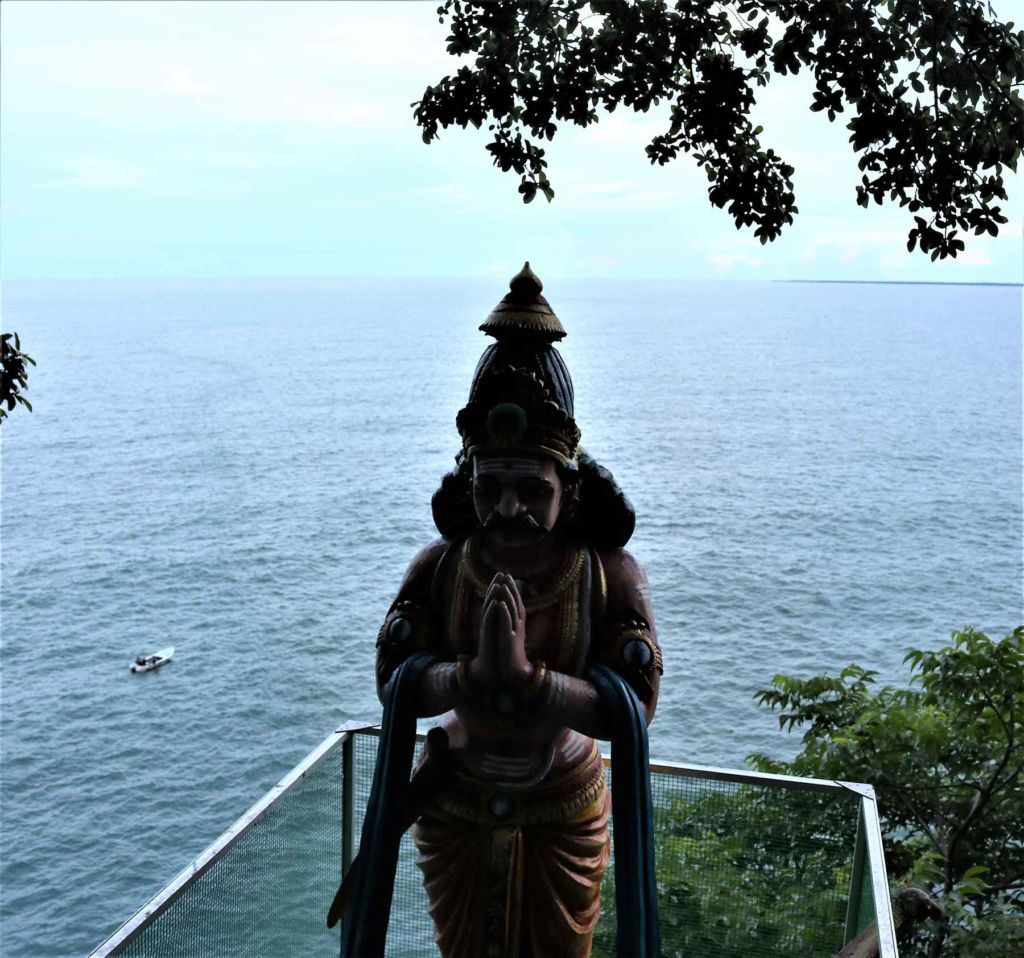
Nala Setu – Adam’s Bridge
This was the bridge that Rama is supposed to have built with the help of the monkey army. It is called Nala Setu because of the design and construction being on the over-seership of an architect called Nala. The age of this bridge is approximated to be over 7000 years old using:
- the Archaeo-Astronomy technique of dating an event/ structure basis the description of the sky and stars at the time of any momentous happening (such a description was prevalent in the Indian sub-continent earlier – still is)
- Oceanography as a dating tool where one looks at the dimensions of the structure and the rise in sea level as a dating tool
Of course, with modern techniques this can easily be estimated – hasn’t been done yet though… If this dating is true though, this would technically be the oldest man-made structure on Earth!
These are the main Ramayana sites. There are many more – a few of them are listed below:
Sita Kotuwa – Gurulupotha, Hasalaka
This literally means Sita’s Fort. It was Queen Mandodari’s (wife of Ravana) palace where Sita was kept before being shifted to Ashoka Vatika. This place also is said to have had an aircraft repair center for Ravana’s Vimana.
Nagadeepa – North Jaffna Peninsula
This is apparently the place where the legendary encounter between Lord Hanuman and Surasa Devi, the mother of the Nagas happened.
The Chariot Path and Sita tear pond – Top of Ramboda Hills
It is believed that this is the path that was taken by Ravana when taking Sita to Ashoka Vatika. Nothing other than grass grows here to date. There is a pond here that never dries up and trees that bear red flowers called Sita flowers which have a unique shape believed to be a silhouette of Rama.
Ussangoda – Southern coast
Reputed to be one of the places that was torched by Hanuman when he first visited Lanka, the soil here has a scorched blackened appearance, unlike that of neighboring areas.
Sri Bhaktha Hanuman Temple – Thawalamtenne, Ramboda
It is believed that Hanuman started his search for Sita from the hills of Ramboda. The Hanuman temple here has a giant 16-foot-high granite statue of Hanuman.
Sita Pokuna – Jungle on top of Haggala Rock
This is a dried-up pond where Sita was held for some time – not accessible freely since it is in the jungle.
Seetha Amman temple – Seetha Eliya
A temple for Rama, Sita, Lakshmana and Hanuman commemorates this scenic spot where Sita is reputed to have taken a bath when in captivity.
Mani Kattuther – A rock in the Labookalle estate, Kondagala, Labookalle
It is believed that Hanuman rested on this rock on the way back to Rama after finding and meeting a captive Sita for the first time
Ravana Goda – Kotmala area opposite Ramboda rock
Sita is believed to have stayed here during her transit. It is extremely difficult to access the caves here – it is linked with tunnels and caves which run through to other parts of Ravana’s kingdom.
This is just a short list of the more interesting places on the Ramayana Trail – there are many more that are equally beautiful here… Do write to me at [email protected] in case you need more information on these.
And of course, Sri Lanka has natural beauty to be mesmerized by – sunrises, beaches and jungles…
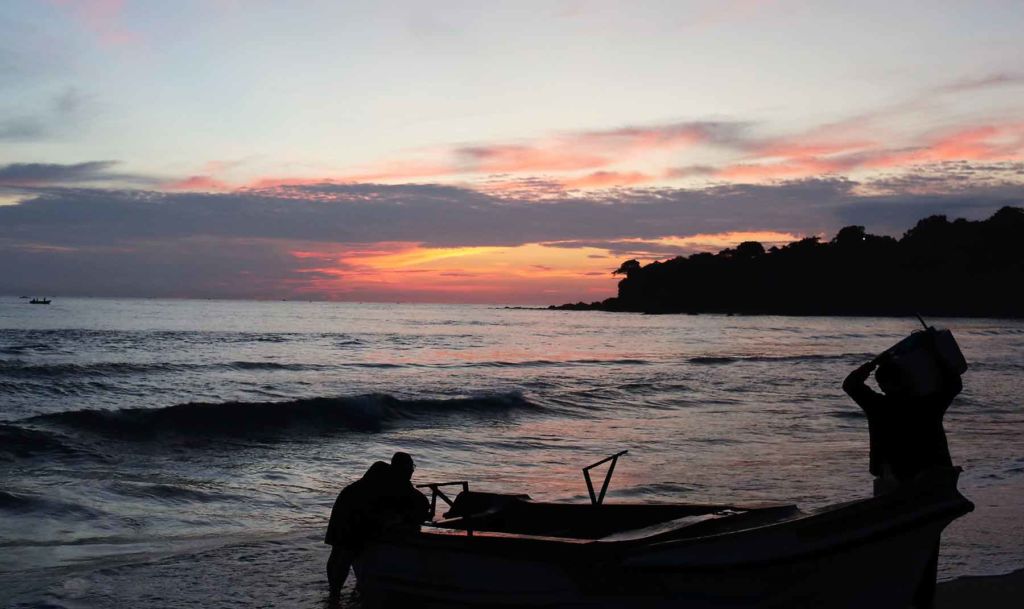
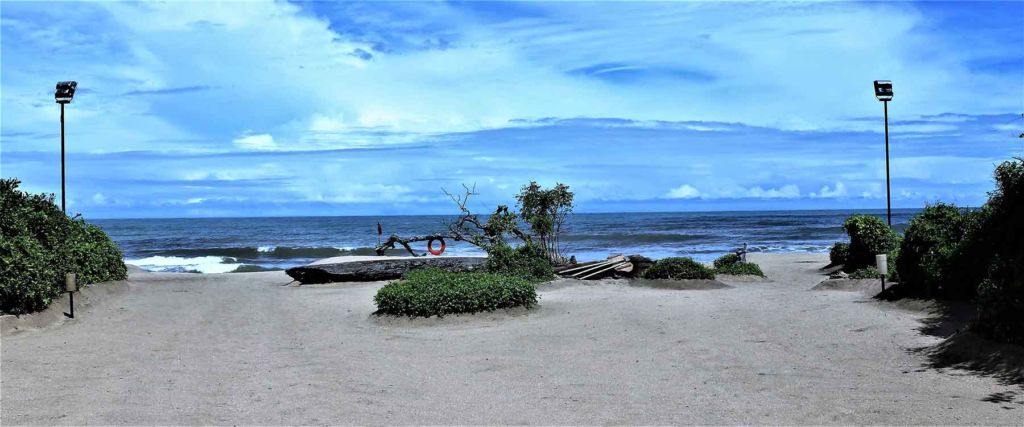
Other than the historical travel packages and the Ramayana Trail, if you wish to visit this beautiful country for its natural beauty, legend or even its food, you can visit www.beyonder.travel for more tours and experiential travel in Sri Lanka.

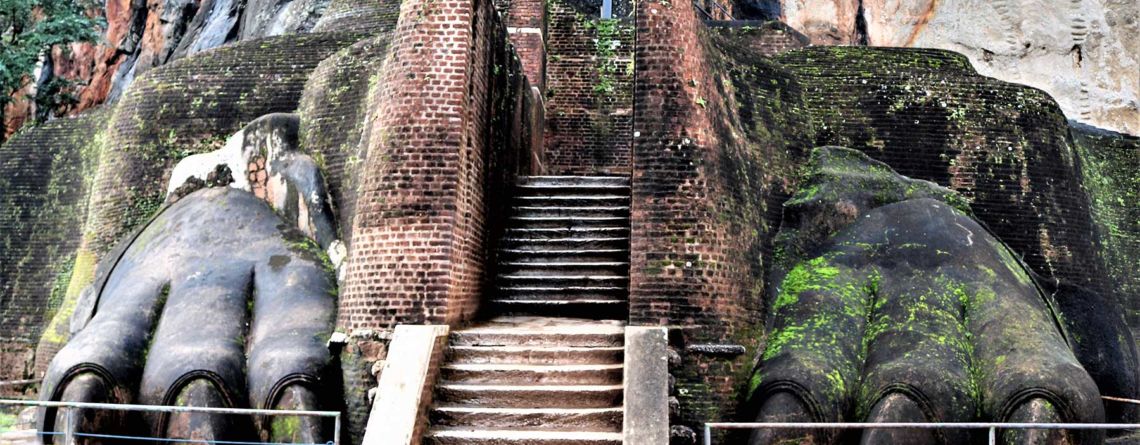
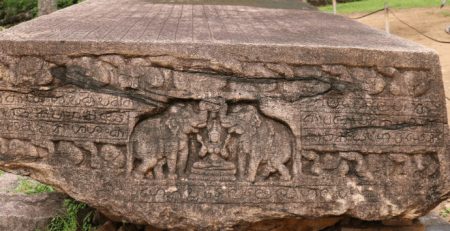
Leave a Reply